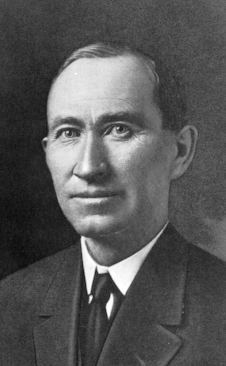Our series on Colorado’s governors continues with Elias M. Ammons, Colorado’s 19th governor. Governor Ammons served one term from 1913-1915. As part of the State Publications Library’s effort to digitize governors’ addresses, Governor Ammons’ inaugural address is available in our digital repository.
Early life
Elias Ammons was born on a farm in North Carolina in 1860 and moved to Denver, Colorado at age 11. Ammons spent much of his childhood working odd jobs to help support his family. Despite working, he was able to finish his high school education and began a career in journalism.

After developing problems with his eyes, Ammons shifted to a career in ranching, eventually leading one of the largest cattle ranches in the state. While working as a rancher, he helped to develop the National Western Stock Show, which remains one of Colorado’s most iconic events. He was also active in banking and helped organize the First National Bank of Littleton.
A few of Ammons’ family members also led successful careers. Ammons’ sister, Theodosia Grace Ammons, co-founded the Department of Domestic Economy at Colorado State University, became the first woman to hold the rank of dean at the university, and was the president of the Colorado Equal Suffrage Association. Elias Ammons’ son, Teller Ammons, was elected governor of Colorado about 20 years after his father.
Political career
Ammons was first elected to the Colorado General Assembly in 1890 as a Republican, although he switched political parties in 1896 due to a disagreement about adopting the gold standard. Ammons was chosen as the Democratic candidate for governor in 1912 and was elected governor in 1913.
In his inauguration speech, Ammons championed education, encouraged public highway construction (the first automobiles were licensed in Colorado during his term), called for updates to conflicting banking and insurance laws, and asked the federal government to cede public lands to the state to create a state parks system.
While he made good on many of his promises, Ammons’ term is primarily defined by the Ludlow Massacre, which took place on April 20, 1914. Like mine workers throughout the state, miners in Ludlow demanded fair treatment from the Colorado Fuel and Iron Company through unionization and strikes. Aggressive strike-breaking actions from the company sparked violence and Ammons called the Colorado National Guard to the area, hoping their presence would quell the hostility. However, tensions rose until a full day of fighting took place between the National Guard units and the striking miners, which resulted in the deaths of 25 people, including 11 children.
Following the massacre, Ammons ordered that General John Chase, the commanding general of the National Guard units in the strike zone, prepare a report of the events in Ludlow for a federal Congressional Committee investigating the strike. This report, titled, “The Military Occupation of the Coal Strike Zone of Colorado by the Colorado National Guard, 1913-1914,” is available in our digital repository.
Life after politics
After attempting a campaign under the shadow of the Ludlow Massacre and the resulting violence in mines around Colorado, Democrats lost the 1914 election and Ammons left office in 1915. He retired from public service and became the president of Farmers Life Insurance Company. Ammons died in 1925 and is buried in Denver’s Fairmount Cemetery.
- Celebrating Colorado’s immigrant heritage - June 27, 2025
- Colorado’s Scenic and Historic Byways: Guanella Pass - June 6, 2025
- Who is protecting Colorado’s pollinators? - May 16, 2025